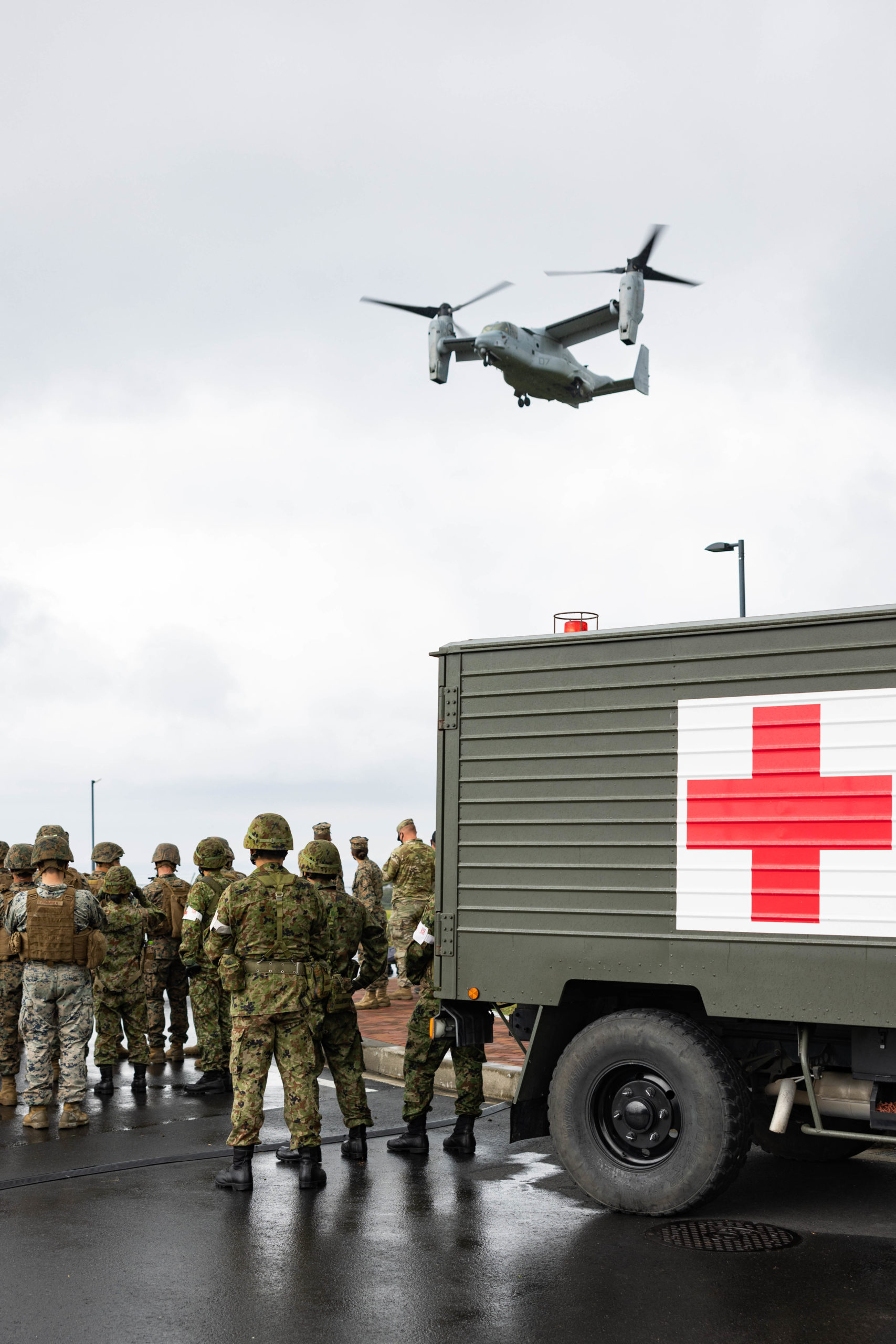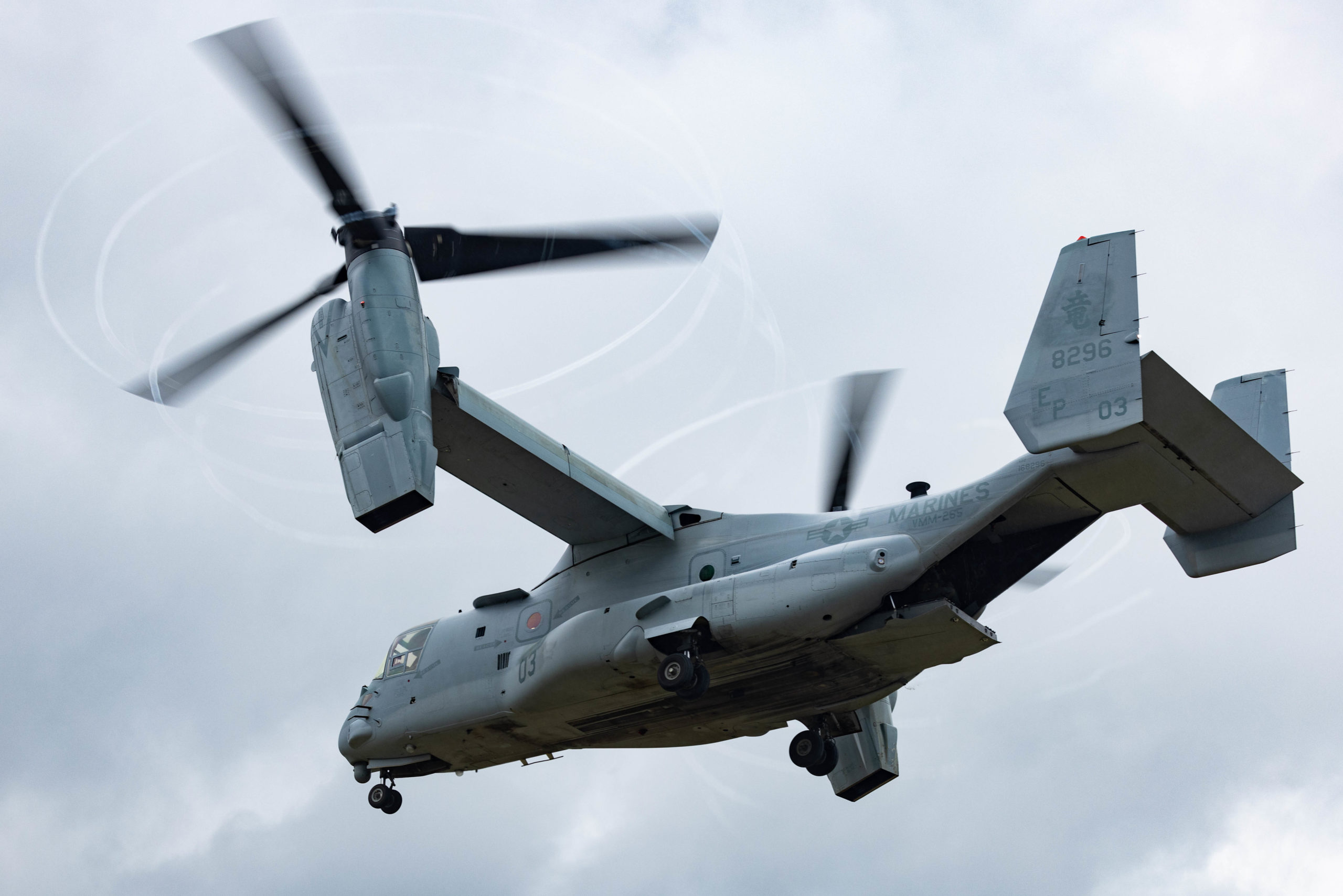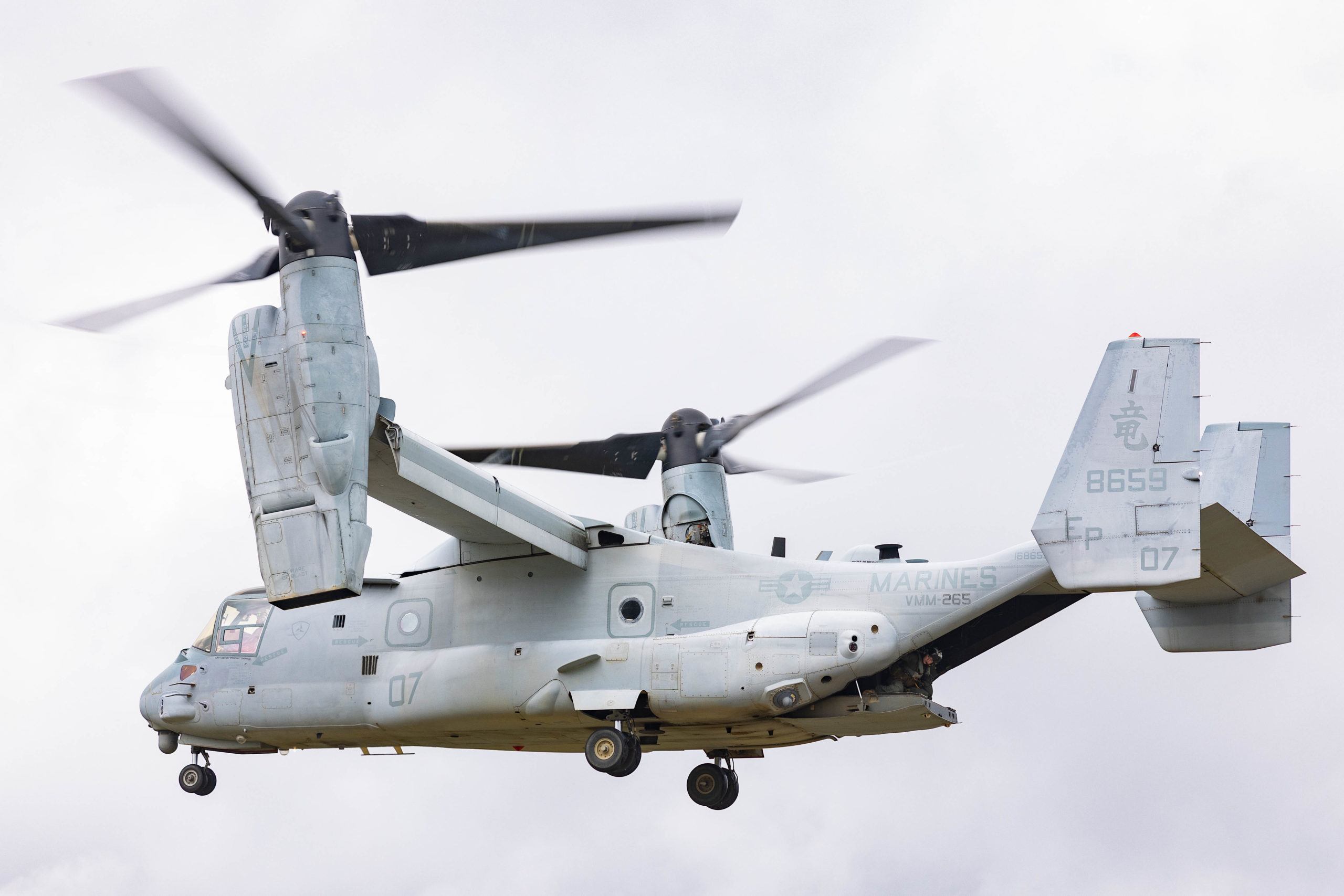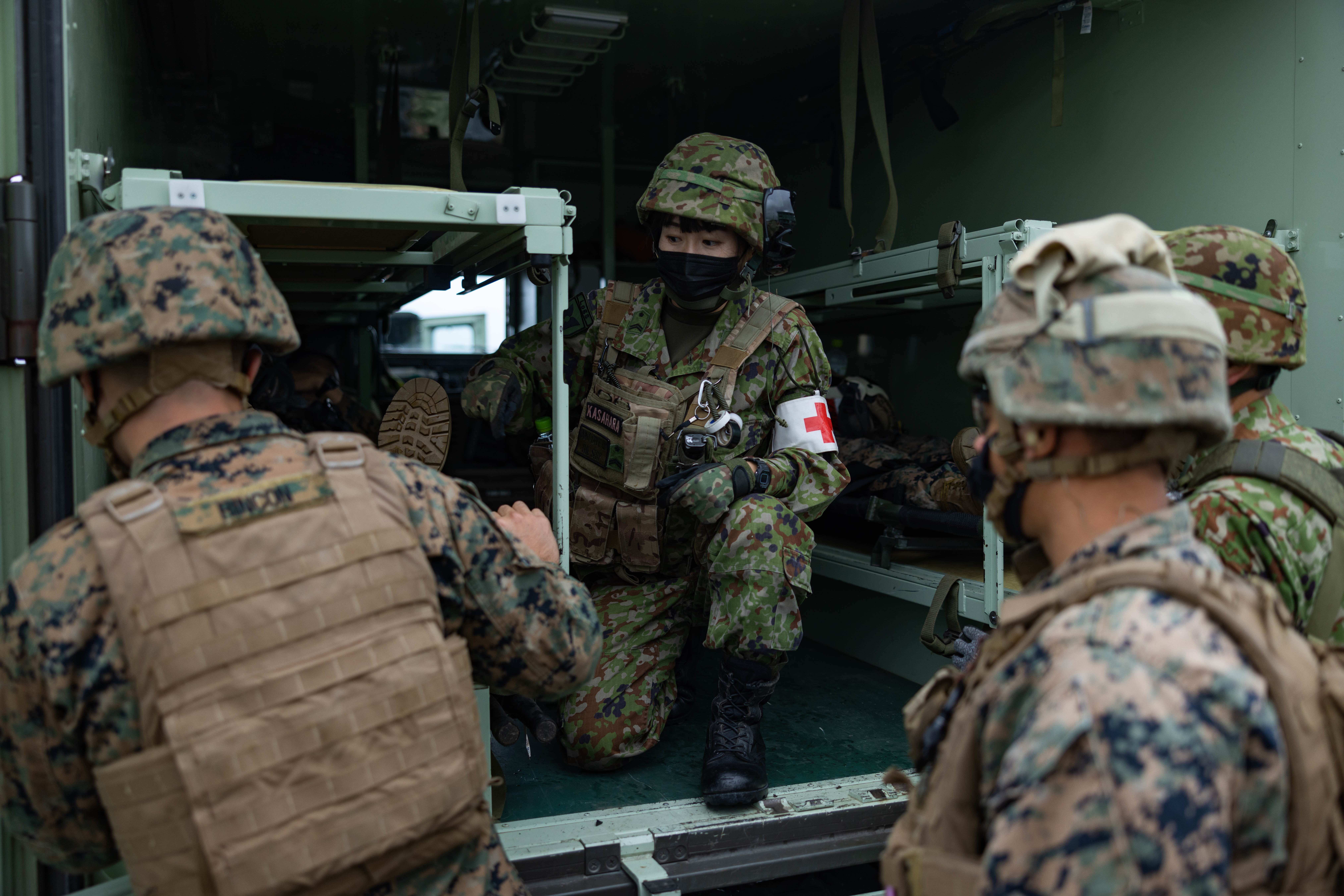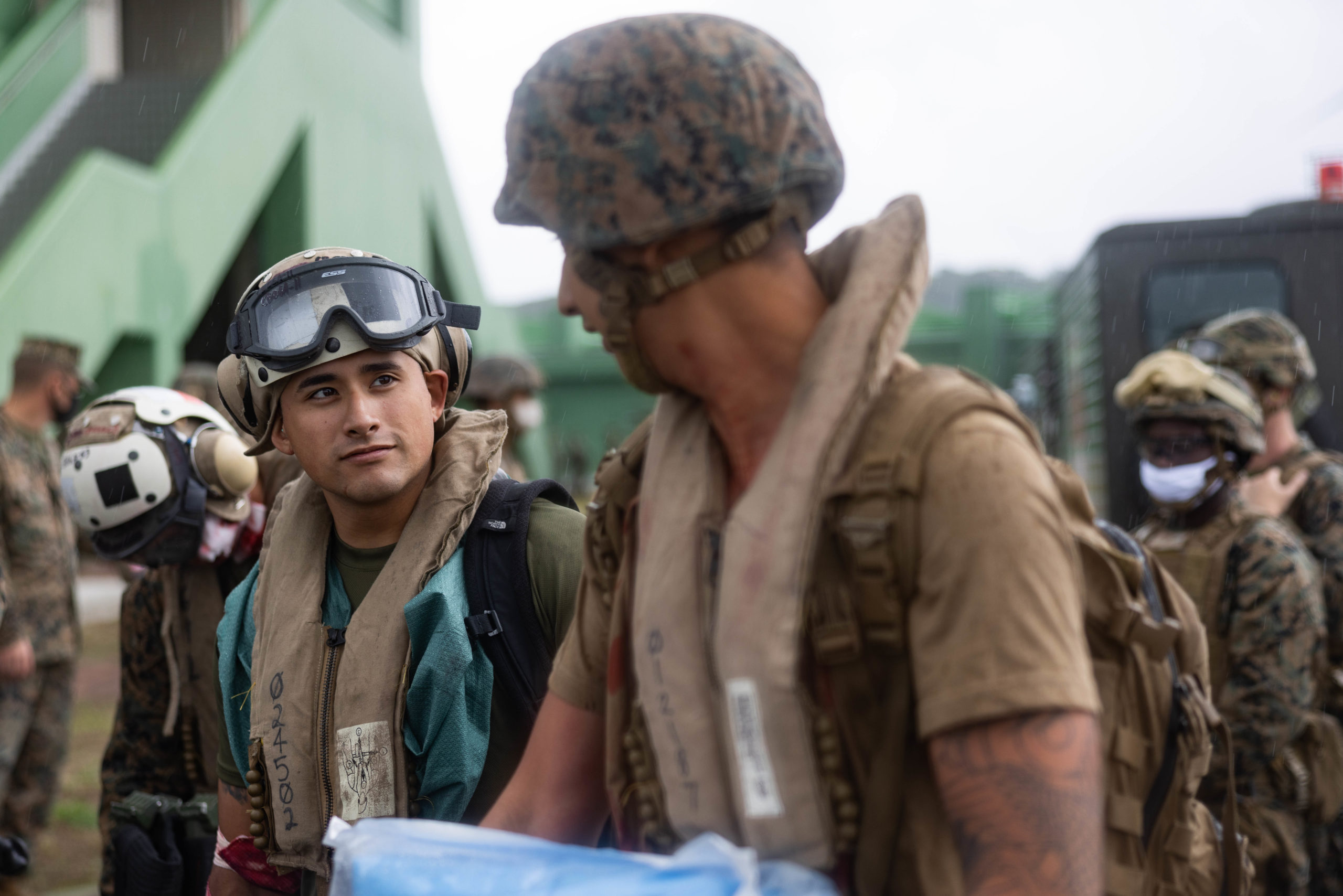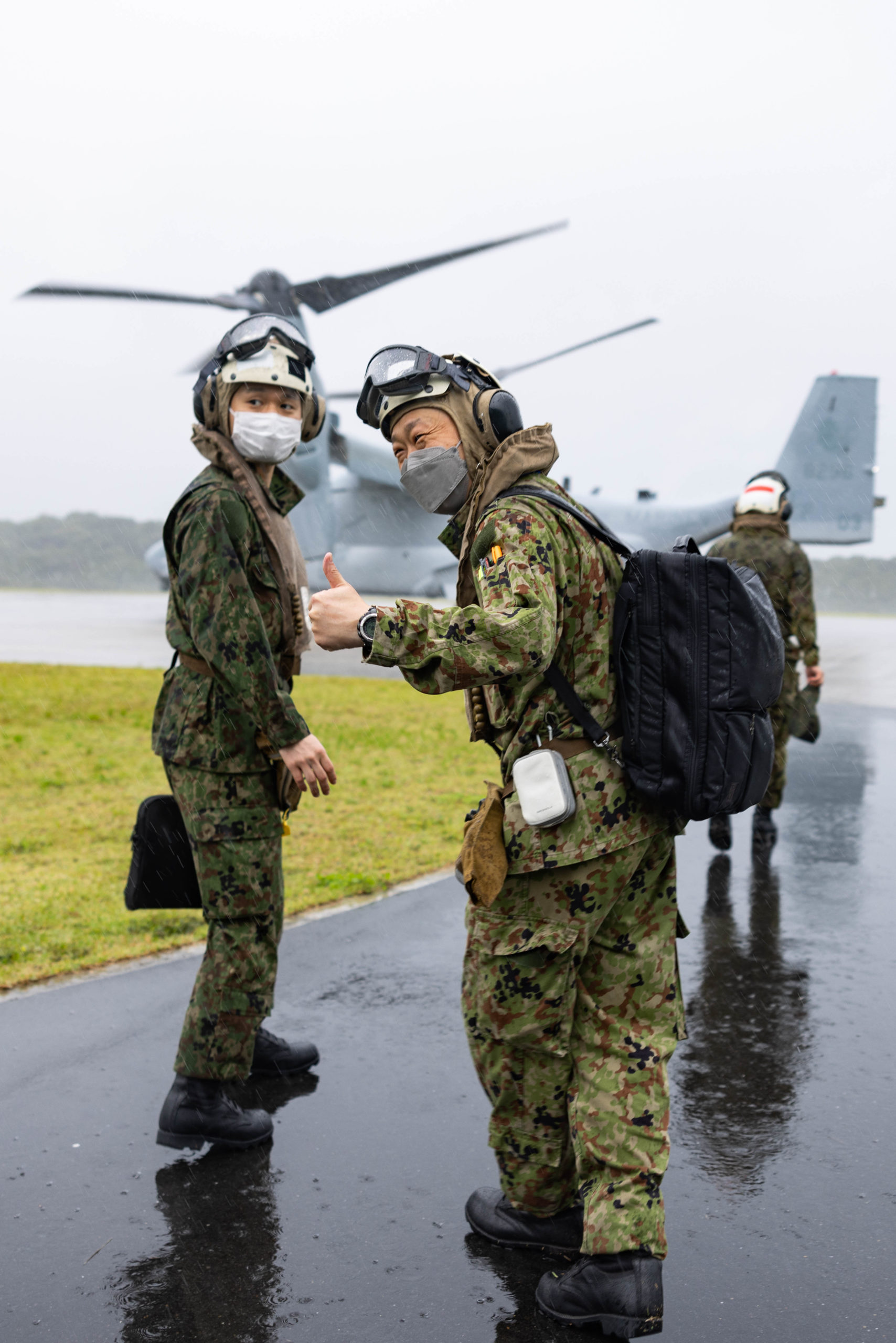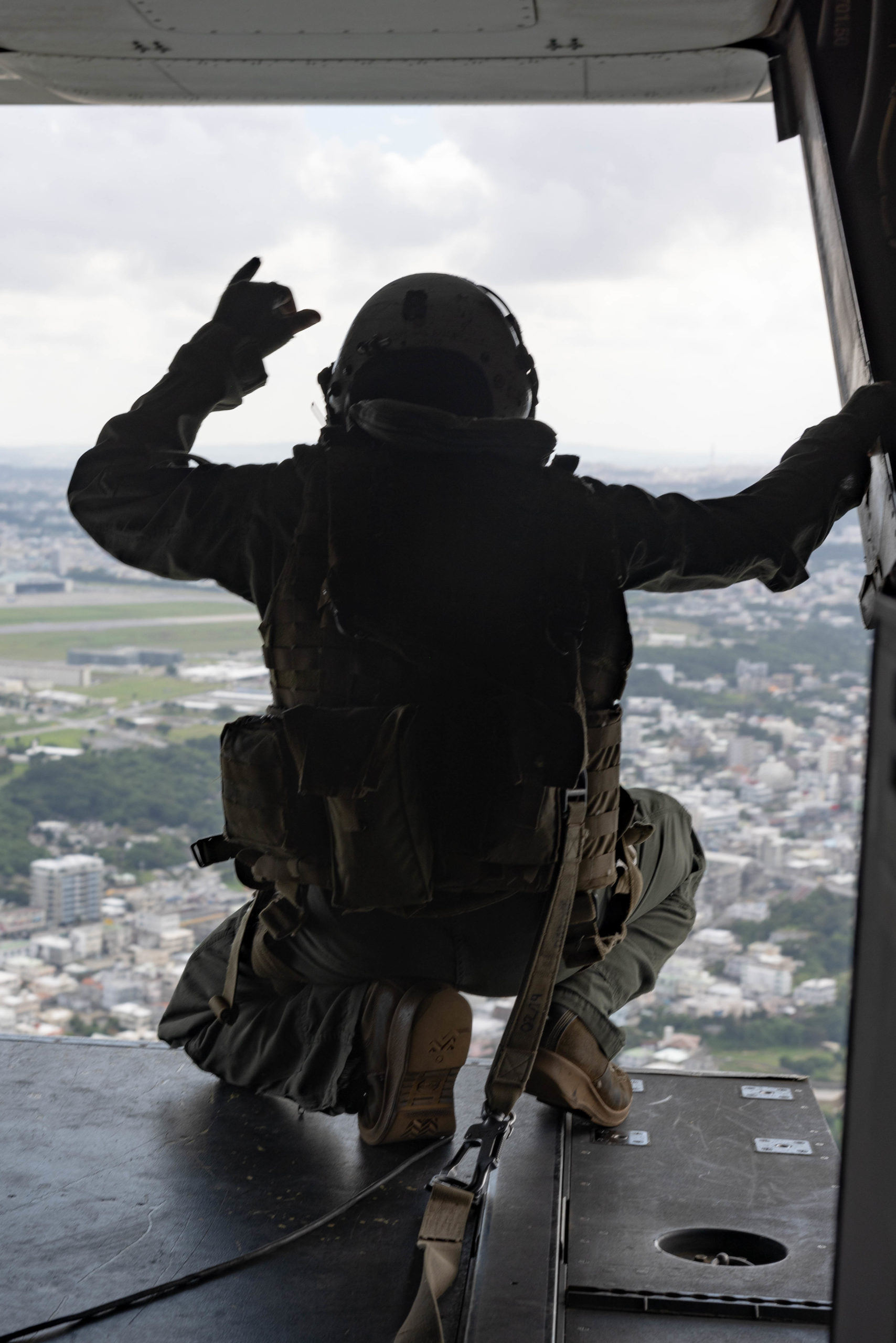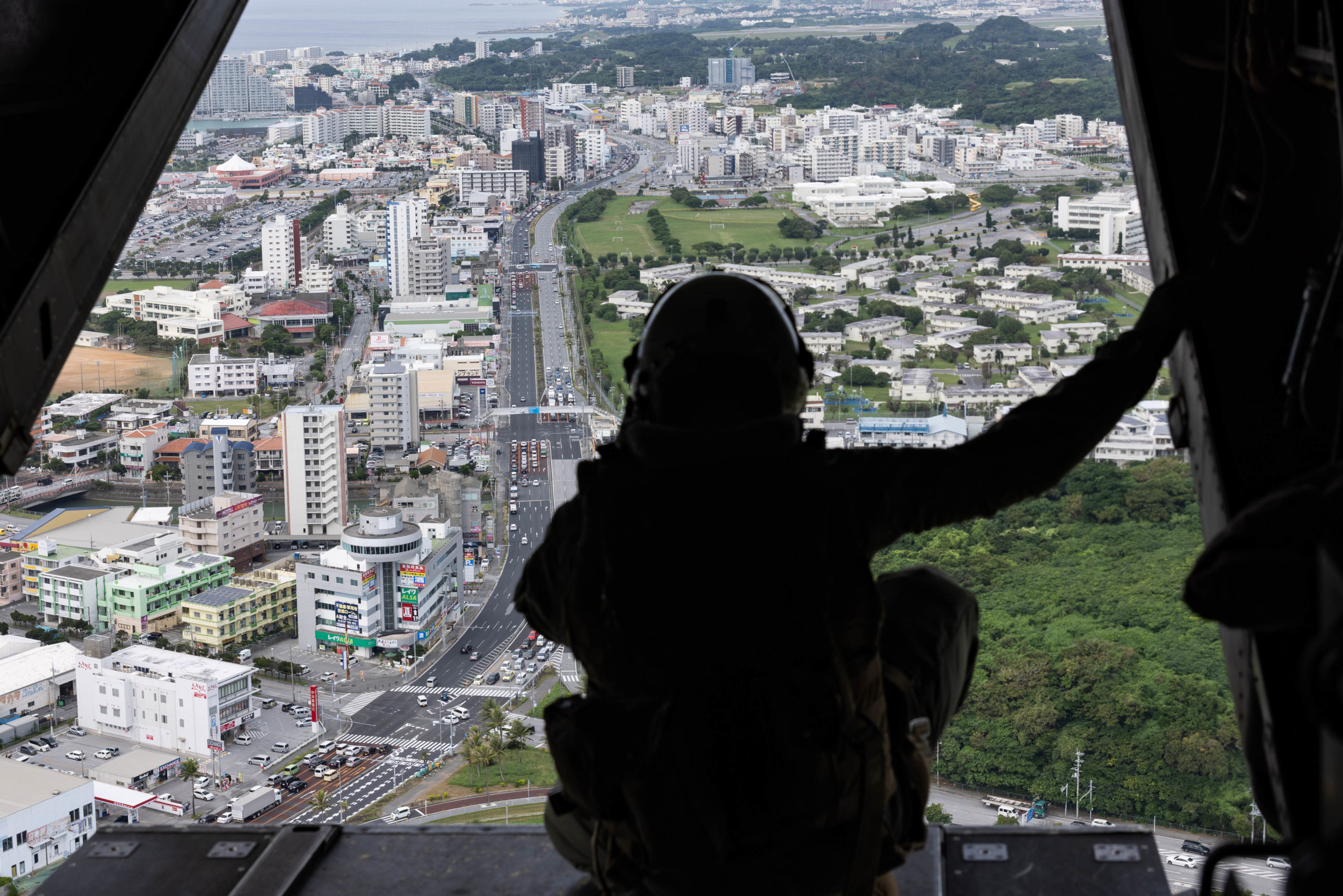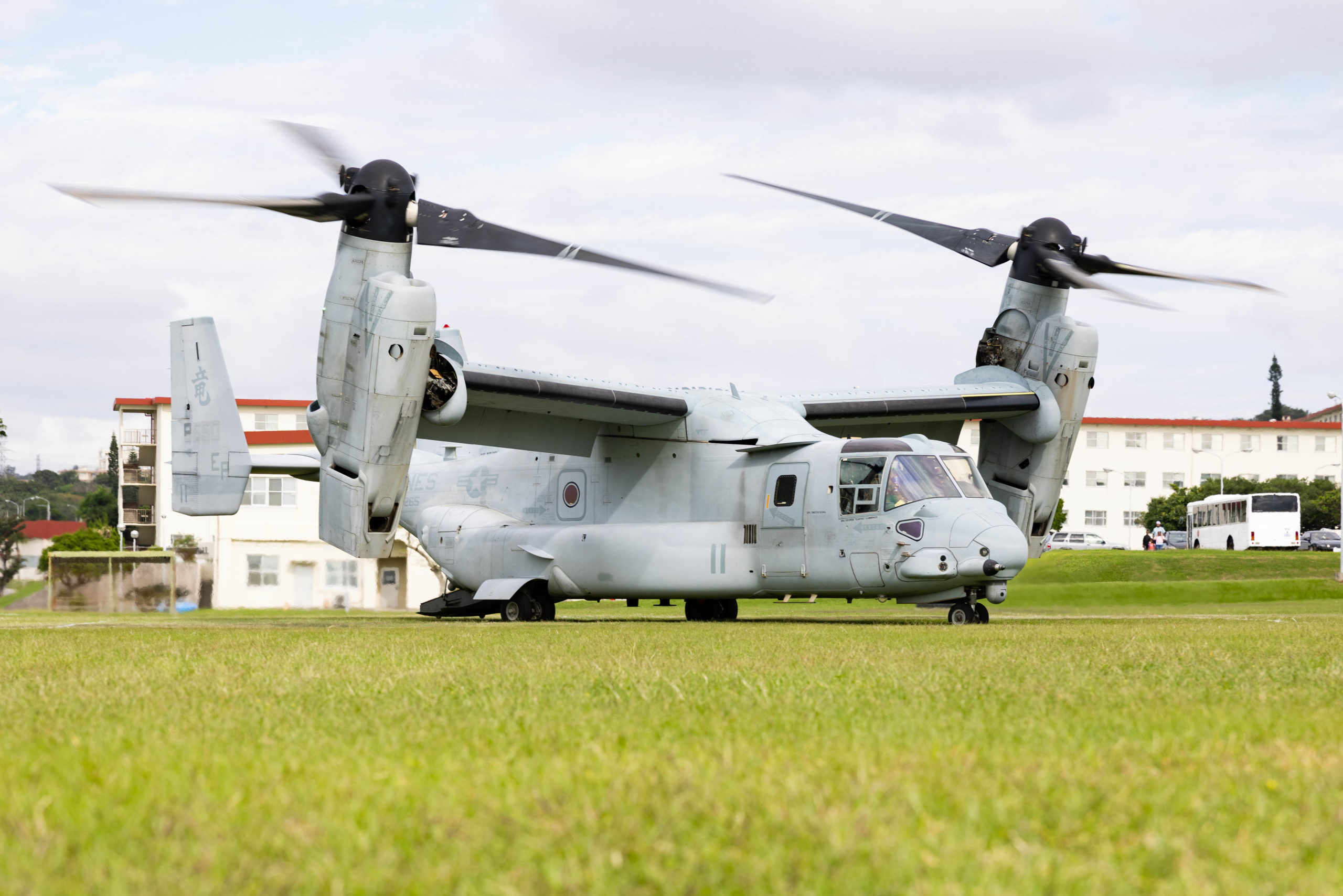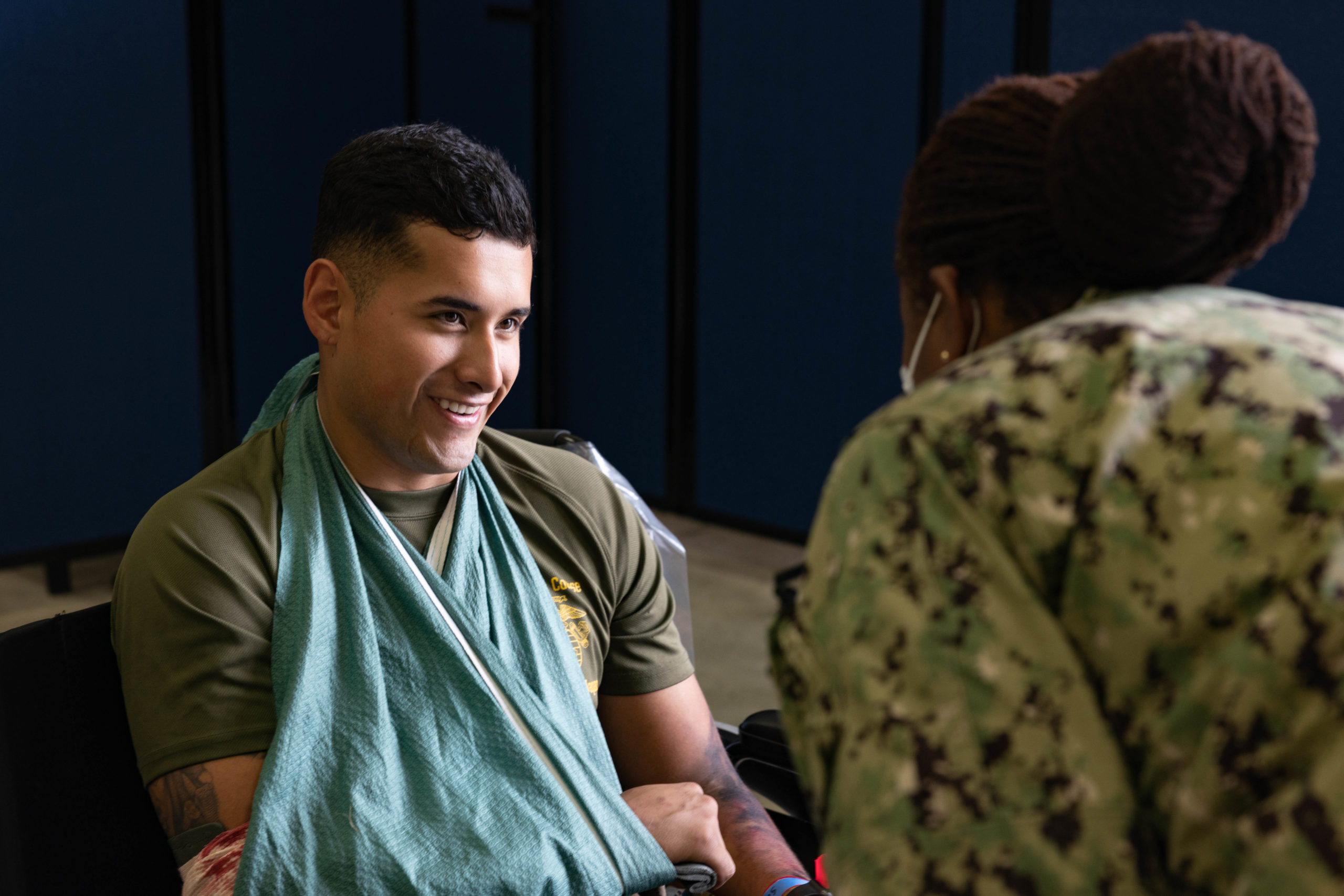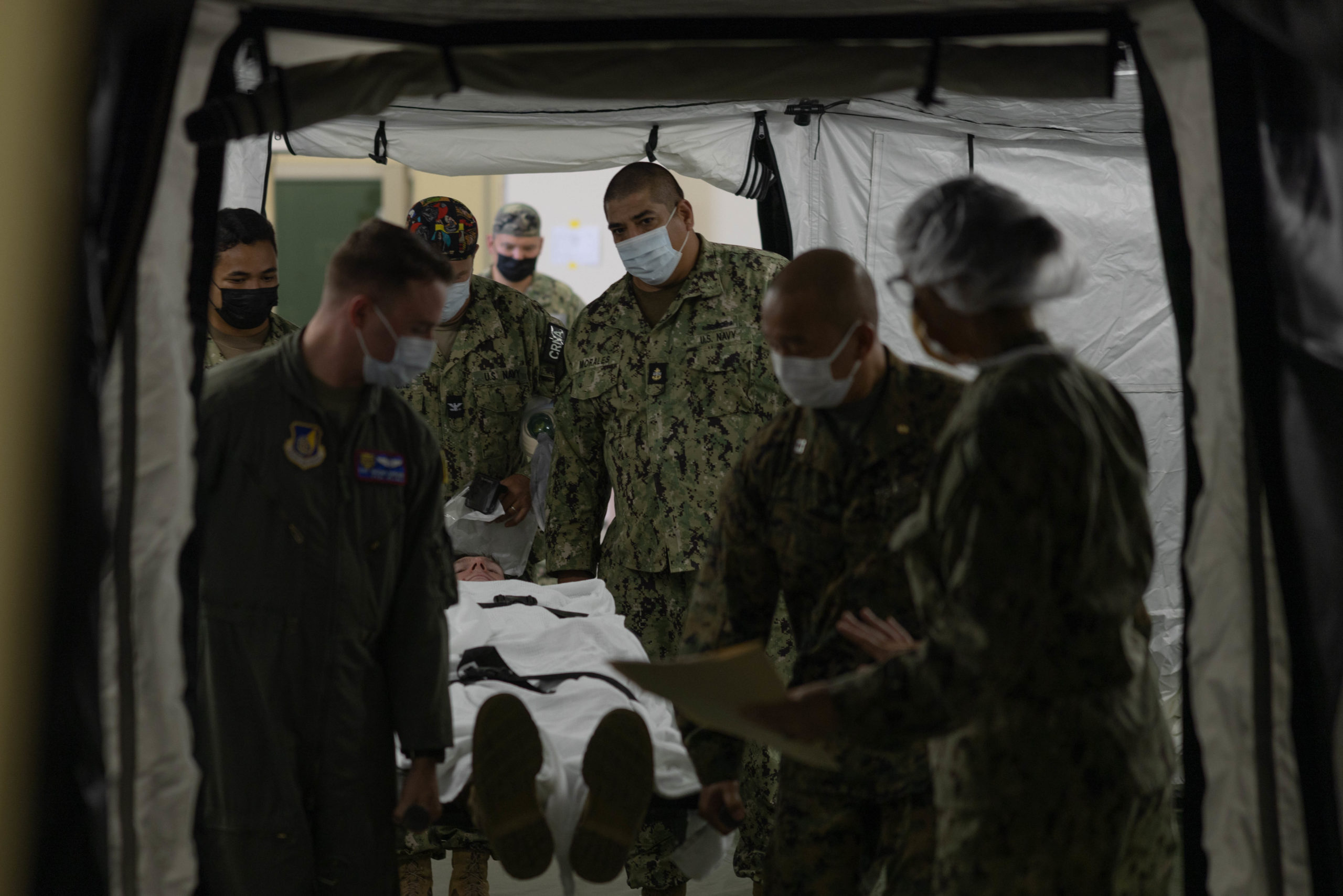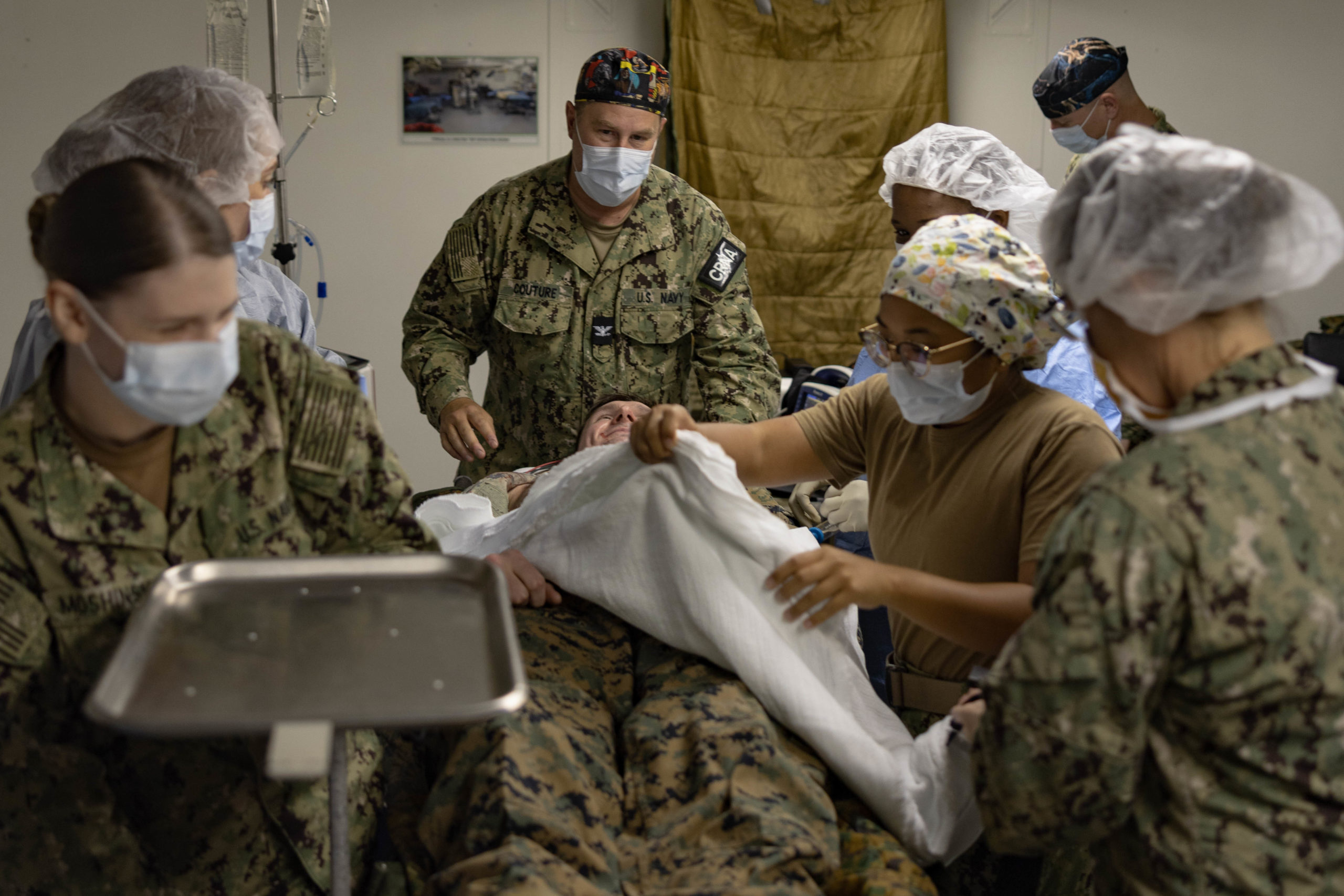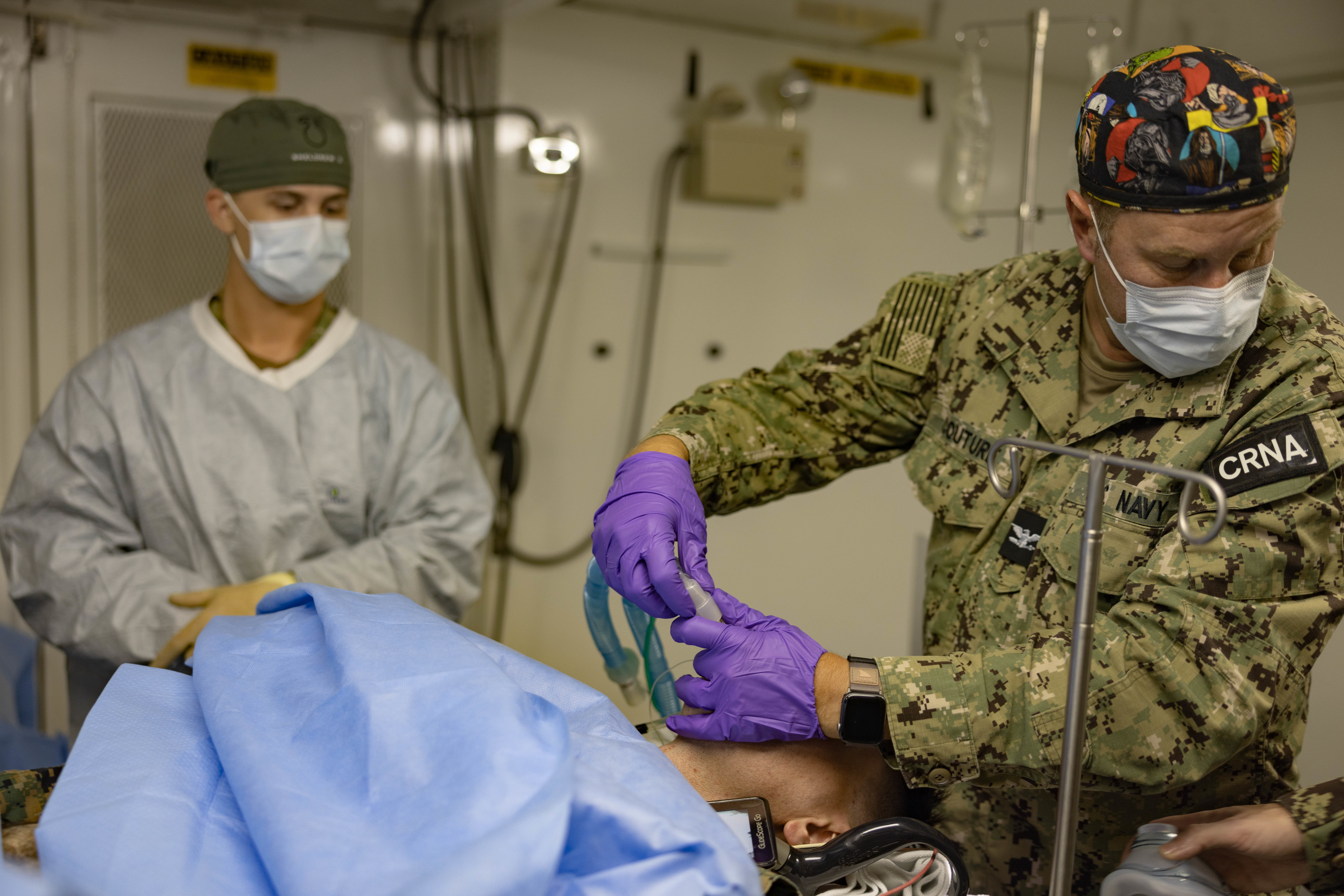In an article by Grady Fontana published by the U.S. Navy on 18 November 2022, the exercising of an expeditionary medical facility in support of major combat operations was higlighted.
“This exercise shows the power of Navy Medicine as part of an integrated Naval combat capability,” said Rear Adm. Darin K. Via, deputy surgeon general of the Navy and deputy chief, BUMED. “There was operational planning and coordination across the Navy-Marine Corps team and at all levels across One Navy Medicine. This exercise lets us better evaluate how we deploy and run an expeditionary medical facility (EMF) in support of major combat operations. It was a successful test of how our units can organize, train and equip forces for force employment by the combatant commands.”
Keen Sword 23 is a biennial, Chairman of the Joint Chiefs of Staff-directed, U.S. Indo-Pacific Command-scheduled, and U.S. Pacific Fleet-sponsored field training exercise (FTX). The joint/bilateral FTX runs through Nov. 19. KS23 is designed to enhance Japan-U.S. combat readiness and interoperability while strengthening bilateral relationships and demonstrating U.S. resolve to support the security interests of allies and partners in the region.
In KS23, Navy Medicine exercised the employment of expeditionary hospitalization on the First Island Chain with bilateral engagement with the Japan Ground Self-Defense Force (JGSDF). The First Island Chain refers to the first chain of major Pacific archipelagos out from the East Asian continental mainland coast.
U.S. Indo-Pacific Command requested Navy Medicine provide an EMF and supporting elements to meet capability gaps in the First Island Chain, with EMF capability to receive, triage, treat, and process casualties in a mass casualty event.
BUMED provided a small headquarters element from NMFP, out of Naval Base San Diego, and EMF 150-Alpha, out of Camp Pendleton, Calif., to support medical-related exercise scenarios at Camp Foster, Marine Corps Base S.D. Butler, Okinawa prefecture, Japan.
To facilitate planning, BUMED flexed its recent organizational restructure that closely aligns functions with Navy operational commands. This included the creation of a Maritime Headquarter (MHQ) and Maritime Operations Center (MOC) at BUMED that better enabled the command to integrate into the U.S. Indo-Pacific Command planning process.
In addition to the NMFP’s HQ element and EMF 150-A, Navy Medicine Readiness and Training Command (NMRTC) Okinawa and Yokosuka provided additional mass casualty scenario involvement.
With Navy Medicine units working in concert, the BUMED assets integrated with a JGSDF medical base at a Naha hospital in Okinawa, and executed mass casualty scenario assessment and response drills, receiving casualties from III Marine Expeditionary Forces aid stations and JGSDF dispensaries.
BUMED involvement in KS23 demonstrated a new laser focus on readiness and operational medicine—man, train and equip.
“As we pivot to embrace our new mission set and organizational structure, NMFP and all subordinate commands will continue to support the warfighter,” said Rear Adm. Guido F. Valdes, commander, NMFP. “We achieve this support by ensuring our operational platforms are optimally manned, trained, and equipped; the warfighter is physically and mentally ready to fight tonight; the installation and warfare commander are fully supported; and we remain on the cutting edge of health and medical research to enhance deployment readiness of the Joint Forces.”
In the past, Navy Medicine played a large role in the execution of the military healthcare mission at military treatment facilities (MTF). In the National Defense Authorization Acts for Fiscal Years 2017 and 2019, Congress called for changes in the military health system (MHS), including the transfer of all MTFs to the Defense Health Agency by Sept. 30, 2021.
Navy Medicine participation in a large bilateral and joint exercise of this scale is a first since the recent MHS transformation.
“BUMED hasn’t participated in an exercise like this, to this scale in a long time,” said Lt. Cmdr. Jefferson M. Moody, director of future plans, N55, and MHQ/MOC future operations director at BUMED. “KS-23 serves as an FTX environment for Navy Medicine force elements to maneuver with the joint force and bilateral partnerships and promote HSS (health services support) interoperability.”
Naval Medical Forces Pacific provides oversight for 10 NMRTCs, on the West Coast and Pacific Rim that man, train, and equip medical forces, primarily in military treatment facilities. NMFP also oversees eight research laboratories that deliver cutting edge health and medical research to enhance the deployment readiness and survivability of our Joint Forces.
U.S. Navy Sailors with Expeditionary Medical Facility Alpha, Navy Medicine Readiness and Training Command, simulate casualty care during exercise Keen Sword 23 on Camp Foster, Okinawa, Japan, Nov. 17, 2022.
During Keen Sword 23, Naval Medical Forces Pacific exercised the inaugural employment of expeditionary hospitalization on the first island chain with bilateral engagement from the Japan Ground Self-Defense Force.
(U.S. Marine Corps video by Lance Cpl. Stephen Holland II)
CAMP COURTNEY, OKINAWA, JAPAN
11.17.2022
Video by Lance Cpl. Stephen Holland
III Marine Expeditionary Force


